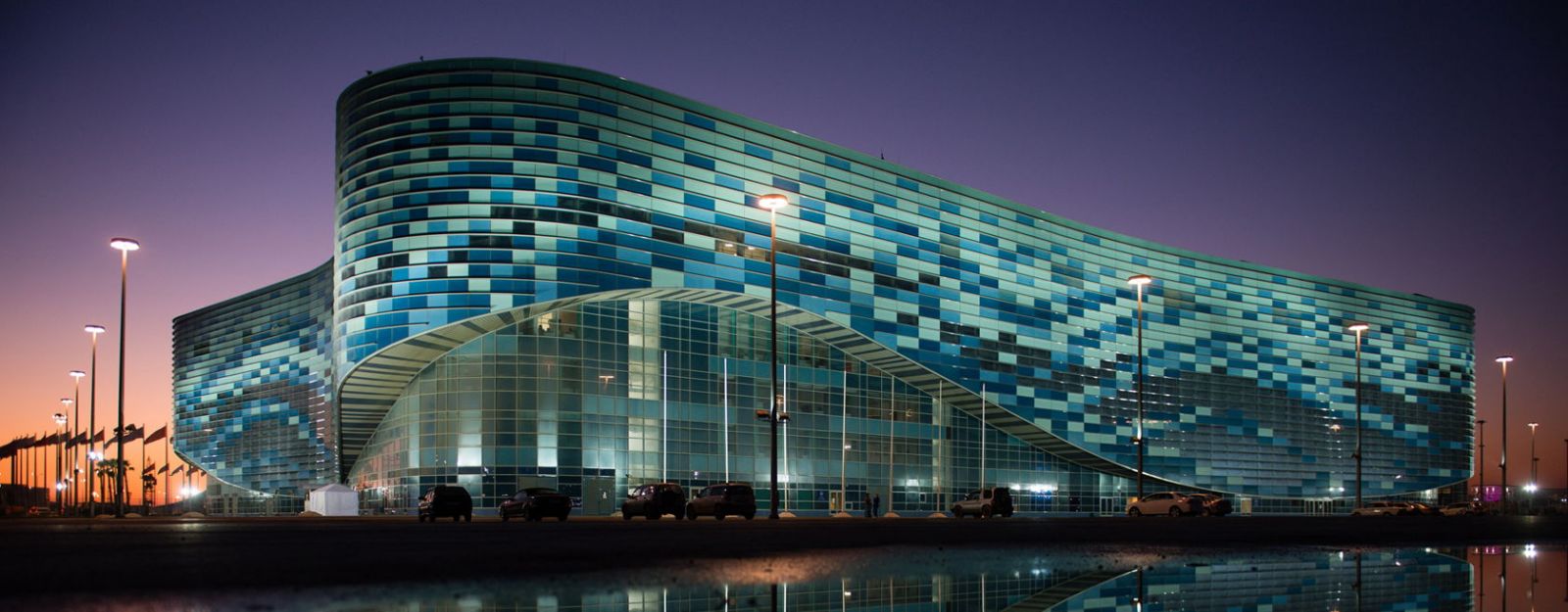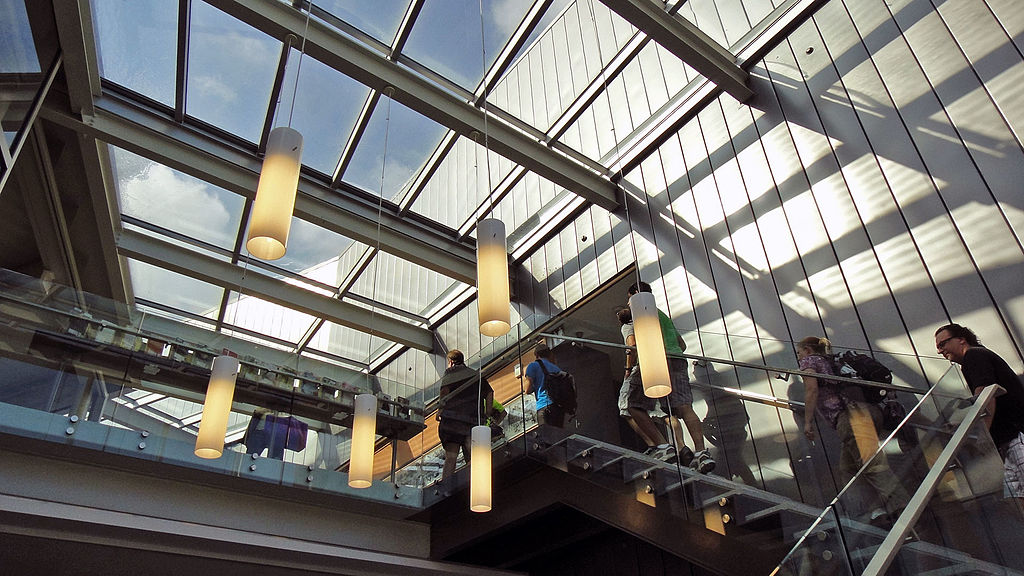Aluminum Uses In "Green" Architecture

Images source: Internet
Prior to two hundred years ago, humanity didn’t even know that aluminum existed, at least not in its purest form. This is despite aluminum being the third most abundant element in the Earth’s crust after oxygen and silicon, and the most abundant metal. Because it is so chemically reactive, aluminum is very rarely found as a native specimen. Rather, it most often occurs naturally as bauxite.
As chemistry advanced in the 19th century, experiments on bauxite eventually yielded pure aluminum. It quickly gained in popularity, and by the early 20th century, aluminum and its alloys would take the architecture world by storm. Already popular in the railroad, automobile, and aviation industries, aluminum became integral in architecture with its use in the Empire State Building, the tallest skyscraper in the world until 1970.
What characteristics make aluminum suitable for architecture?
Aluminum alloys are highly valued for being lightweight, easy to work with, and environmentally friendly. Its primary benefit is that aluminum has an extremely high weight to strength ratio that makes it invaluable for architectural purposes. For example, it’s aluminum that makes possible the large glass spans that are a common feature of skyscrapers. It’s also fire resistant and offers a number of other properties that make it safer than other building materials.
Aluminum is also prized for its sleek appearance. Advancements are taking place all the time that allow aluminum to take on various metallic glosses and colors. It also has tremendous formability, meaning that designers can shape aluminum in whatever way necessary to meet their aesthetic and structural needs.
Another characteristic of aluminum that makes it indispensable in modern architecture is its durability. Aluminum naturally has superb anti-corrosion properties that are only accentuated during the anodizing process. It’s extremely weather-resistant and can handle harsh climates that might adversely affect other materials. It makes it easier to maintain buildings, which will age much better.

Images source: Internet
Aluminum’s wide diversity of applications and excellent performance in even the harshest conditions has allowed architects to make great strides over the last one hundred years, pushing the envelope of what’s possible.
A decorative metal
Aluminum alloys were first used in architecture for decorative purposes because it is easily shaped and polished. In the Empire State Building, many of the decorative features, such as the entrances, elevator doors, ornamental trim, and window spandrels, were made with aluminum. Other architectural uses that were common at the time included roofing, gutters, paneling, and other ornaments. It even became frequently associated with the Art Deco movement.
Today, aluminum alloys can serve many decorative functions. It is common for designers to use aluminum sheets that can be specified with a wide variety of grains and colors. These sheets can range .04” to .125” in thickness, and come in many different designs, such as corrugated, perforated, laser-cut, or with gradients or engravings. Aluminum alloy 5052 is widely applied for such purposes.
What is anodizing and why do architects love it?
Anodizing is an electrochemical process that alters the surface of a metal to give it a durable, corrosion-resistant finish. This protective layer is formed an anodic oxide that is actually part of the metal itself and not just a surface coating, meaning that it’s more durable and attractive. Because of its particular characteristics, aluminum is among the best-suited materials for anodizing.
Whether you are talking about sulfuric, chromic, or hard-coat anodizing, aluminum with anodic coatings can be found in all kinds of architectural applications. Anodized aluminum doesn’t chip or peel, is highly scratch-resistant, and is highly corrosion-resistant, even when exposed to saltwater or harsh sunlight.
Highly customizable, aluminum anodized coatings can replace stainless steel at a cheaper price point, not to mention it is more durable, lighter, and more efficient to work with, furthering the savings involved.

Images source: Internet
A key ingredient in GREEN buildings
With the increased demand for environmentally conscious and sustainable solutions in all industries, green building techniques are highly desired by architects. Aluminum alloys serve many environmental functions thanks to their unique properties. First of all, aluminum is highly recyclable. In fact, aluminum is 100% recyclable and retains all of its characteristics during the recycling process. Recycled aluminum requires up to 90% less energy to produce, compared to mined aluminum ore.
Aluminum is also renowned for its insulating properties. Comparing it to other materials, aluminum siding can protect against cold temperatures 4 times more effectively than 10 cm thick brick or 20 cm thick stone barriers. Aluminum can provide installation while still allowing sunlight and air into buildings. As mentioned above, the huge glass spans on the outside of skyscrapers that are made possible by aluminum structures serve more than just a decorative purpose. They also allow buildings to be more energy-efficient.
Aluminum’s lightweight and formability positively affect the entire construction process. Aluminum is easier to ship, easier to work with, and less wasteful, making not only the finished building but also the construction process more efficient. This means that choosing modern aluminum alloys results in lower greenhouse gas emissions, less energy and water use, and less waste that ends up in a landfill.
What alloys are common in architecture?
The alloys that architects use most often are the 5000 and 6000 series, in addition to Silicone (ex: LM6) and manganese (ex: 3103) alloys. Among the most popular, 6063 alloy is highly sought after for its excellent extrudability, corrosion resistance, and surface finish, and is often found in window frames. Builders and architects need to be very knowledgeable about how alloys will respond to particular shapes and whether their performance and durability will be affected.
Summary
At KIMSEN Aluminum, we believe that every manufacturer needs to use the right alloy for the job. We pride ourselves on being a knowledgeable solutions provider to our customers. Contact one of our friendly customer service representatives today to learn what alloy is right for you.
>> Check out our Architecture Aluminum
With modern production lines and highly strict product quality control; KIMSEN’s aluminum profiles not only meet Vietnamese technical regulations but also meet international product standards as Japanese Industrial Standards JIS H4100:2015, European Standards EN 755-9:2016.

For more information, please contact us via Hotline +84 93 867 6005 or email info@kimsen.vn
KIMSEN INDUSTRIAL CORPORATION
Head Office & Factory: Yen Phong Industrial Park, Yen Phong Dist., Bac Ninh Pro., Vietnam
Hanoi Office: 14th floor, TTC Tower, No. 19 Duy Tan Str., Cau Giay Dist., Hanoi, Vietnam
Hotline: +84 93 867 6005
Email: info@kimsen.vn
*Reference: https://www.clintonaluminum.com/aluminum-uses-in-architecture/


 Chia sẻ:
Chia sẻ: